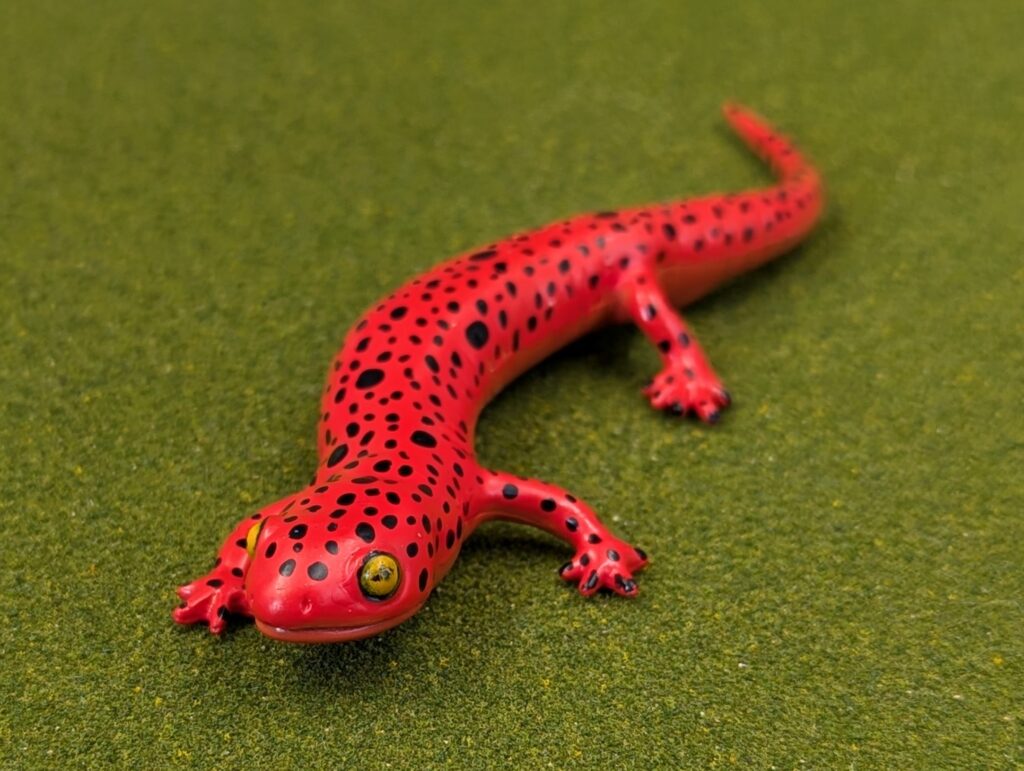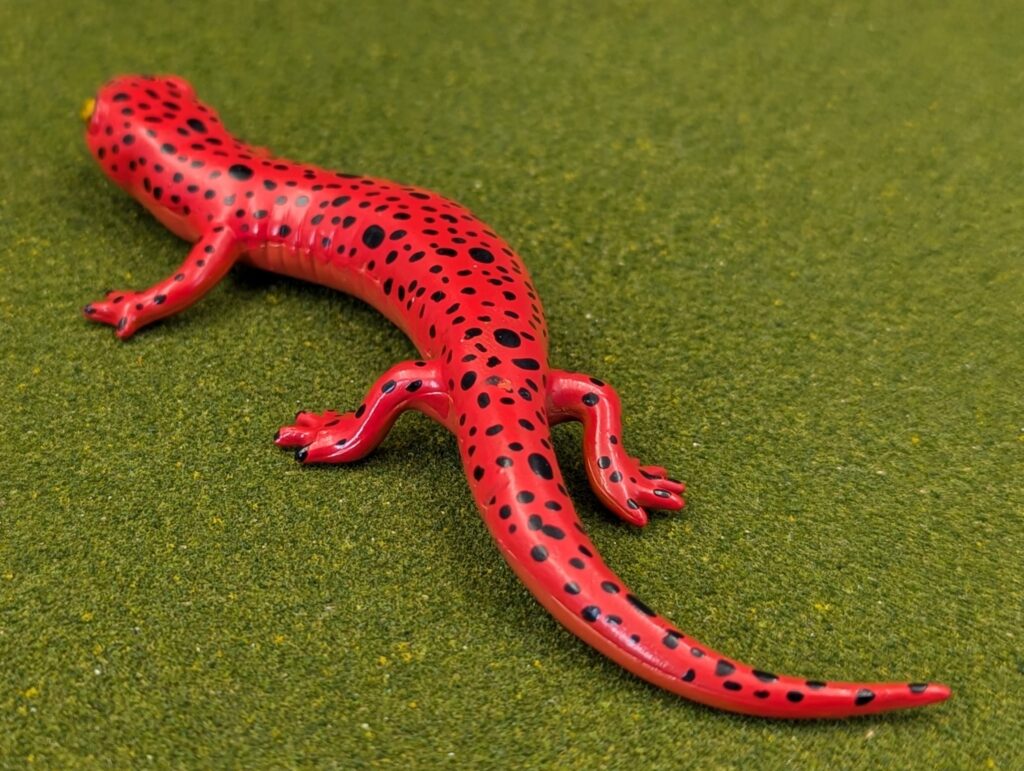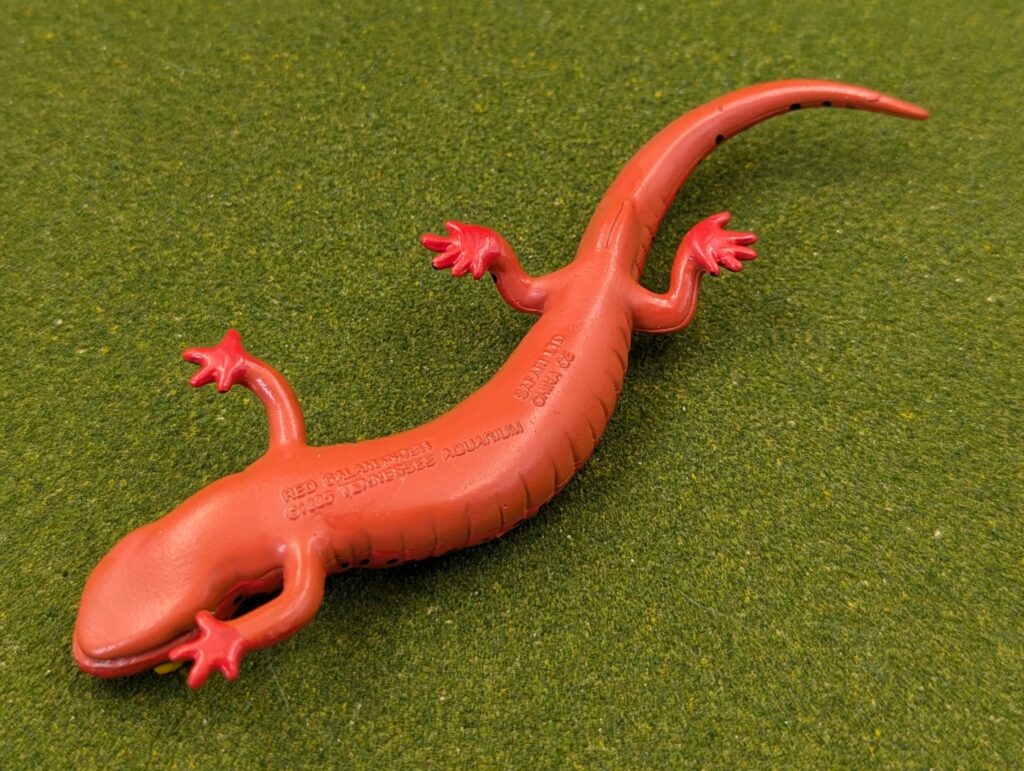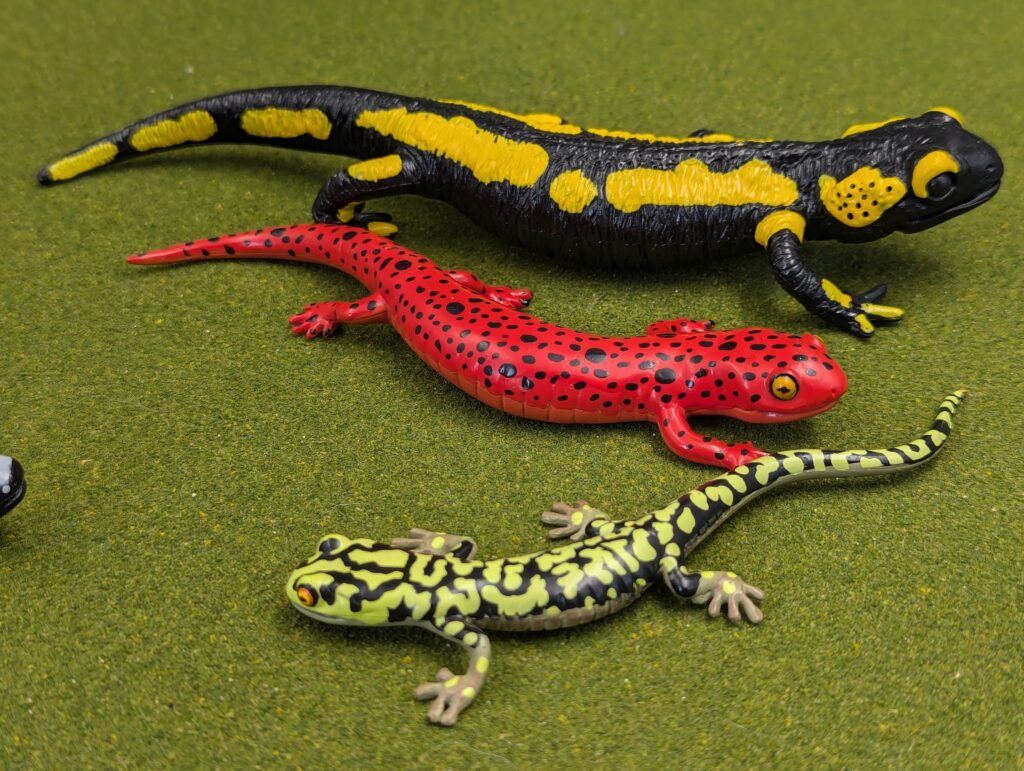
The next figure to look at from Safari’s Tennessee Aquarium Salamander collection is the red salamander, Pseudotriton ruber, series number 210272. It represents a species that is fairly widespread in the United States east of the Mississippi river, from New York state south to Louisiana, Alabama and Georgia. Throughout this range there are at least four currently recognized subspecies, which are variously similar. It will come up as a describe it, but the patterning on this figure is not particularly helpful in identifying it beyond the species. The species is listed as Least Concern by the IUCN as it is still widespread, but can be locally affected by pollution and habitat disturbance. In Indiana it is considered endangered.


Like the previous green salamander the red salalamander is a lungless salamander of the family Plethodontidae, but they are far more broad in terms of habitat, preferring to live in areas like forests and meadows in very moist environments, adjacent to clear streams. They are most likely to be hiding under moss and rocks. In the winter and fall they usually go into the streams and bogs, where they also breed. They are nocturnal hunters, preying on arthropod and sometimes smaller amphibians. They are modest sized animals, with adult lengths of 11cm – 18cm (for males and females). They are of course notable for the generally red body colour (which can be closer to orange, or sometimes purplish) with varying amounts of black spotting. The red salamander appears to have chemicals in its skin that makes them unpleasant to small predators; they often share distribution with other red-coloured salamanders, in particular the highly toxic ‘red eft’ juvenile of the eastern newt (Notophthalmus viriscidens) and it is possible that some kind of mimicry may be involved where non-toxic species mimic toxic ones, or several toxic species have similar appearances which reinforces protection. Or there could be other possibilities…nature can be surprising.

The model is a beautiful model where Safari gets a lot of things right–and leaves one thing ambiguous. The figure itself is 14.8cm long, so life-size 1:1 scale right in the middle of their size range. It is of course a bright red (no ambiguity there), dark red across the dorsal surface to the mid-line on the sides, with the lower half of the body and ventrum a lighter pinkish colour. This body colour appears to be plausible, although the lower half could probably stand to be a little lighter in colour. Across the entire back, upper sides, head, legs and tail are the expected assortment of larger and small spots, dots and blotches of shiny black. There are no marking past the mid-line of the body, nor on the chin. This is why the subspecies is indeterminate; some subspecies have dark blotches on the chin and spotted tails; others have unmarked chins and no tail spots…so this one is a bit of a mix, and making the model more of a representative of the species as a whole than of any particular subspecies. The only other colouration is the eyes–they are a bright gold, with a distinct, horizontal pupil.

The sculpt is also excellent. The body is planted firmly along the ground, in a very shallow sinuous pattern. The body is more cylindrical, with a thick tail that seems a bit foreshortened, or maybe just not quite thick enough. That said, the overall proportion of body to tail appears reasonable. Either way, the figure has a long, stretched appearance (though not quite to the extent of the green salamander). The head is raised up with mouth deeply sculpted but closed. The bright eyes are sculpted as large and bulging. The sides of the body and of the base of the tail are sculpted with a large series of costal folds. On the belly, the cloacal bulge is sculpted but not identifiable to male or female. The feet are extended out with long pointed toes.

Overall, this figure is a great representation of the red salamander from Safari. As far as other figures go, there are other figures of the red salamander but none to this level (including a toob figure from Safari!) The to-scale model size is also a brilliant feature of the whole series. Again, a wonderful model that might be worth the search but could be tricky to find!

Disclaimer: links to Ebay and Amazon on the AnimalToyBlog are affiliate links, so we make a small commission if you use them. Thanks for supporting us!



